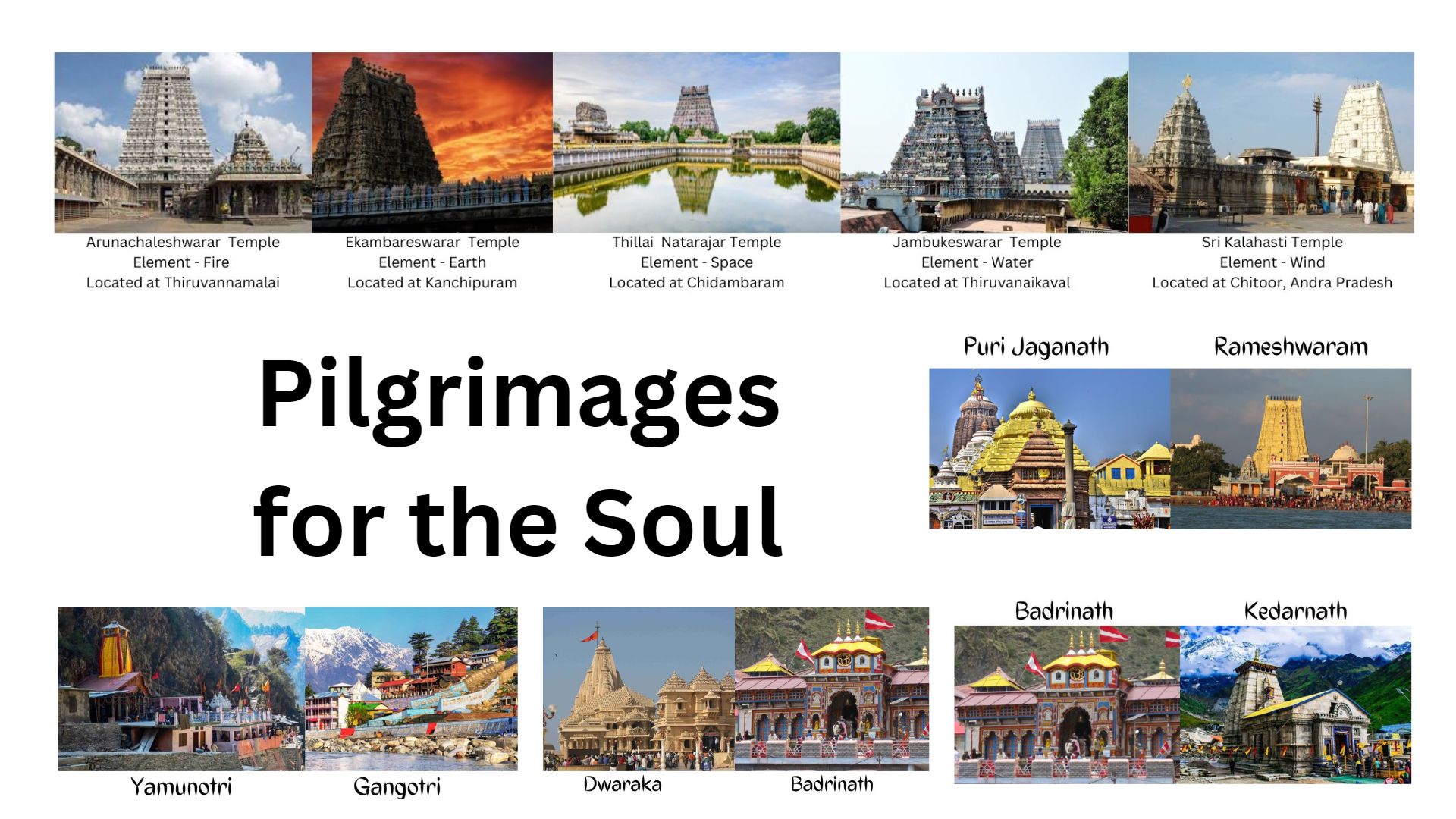
A Yatra ( a Sanskrit word for journey) or a pilgrimage is a journey a devotee undertakes to a holy place or shrine. A sacred place not always denotes a shrine or a temple. In Hinduism, holy places include mountains, shrines, caves or confluence of rivers. A devotee or Pilgrim honestly believes that a Yatra brings him closer to his beloved God. Most of the time, the journey itself is full of hardships and gives a devotee a divine experience and, hence is considered as significant as the final destination.
In the olden days, like-minded people ventured out on Tirtha-Yatra in groups. They visited the places mentioned in the great epics, such as the Mahabaratha and Ramayana. Some people visited the shrines of their favourite God, sacred rivers or regions near their villages as a part of their Yatra. No matter how far or near they travelled, a pilgrimage always had the power to strengthen the faith and help in the spiritual advancement of a devotee.
A Yatri or devotee follows the rules and distinct guidelines laid down in the Hindu Dharma Shastras while undertaking the Yatra. Most pilgrims / Yatri walk a certain distance ( according to their age and fitness level) during the pilgrimage. They observe Virat and undertake the journey on foot known as "The Padayatra" Many devotees undertake it as an annual affair and visit their favourite God on foot like in the case of Sabarimalai or Palani.
According to the popular belief of the Hindus, every devotee must undertake a pilgrimage at least once in a lifetime. This is because, a pilgrimage often tests one’s willpower, devotion and faith as the devotee travels far and wide and meets with challenging situations which make him humble.
MUST VISIT PILGRIMAGE PLACES IN INDIA
India is a holy land. It is a land filled with powerful shrines, holy rivers and mesmerising mountains where the vibrations are immensely sacred leading to a self-transformation of spiritual awareness and well-being. Some of the note-worthy places for a pilgrimage are:
1. Char Dham Yatra
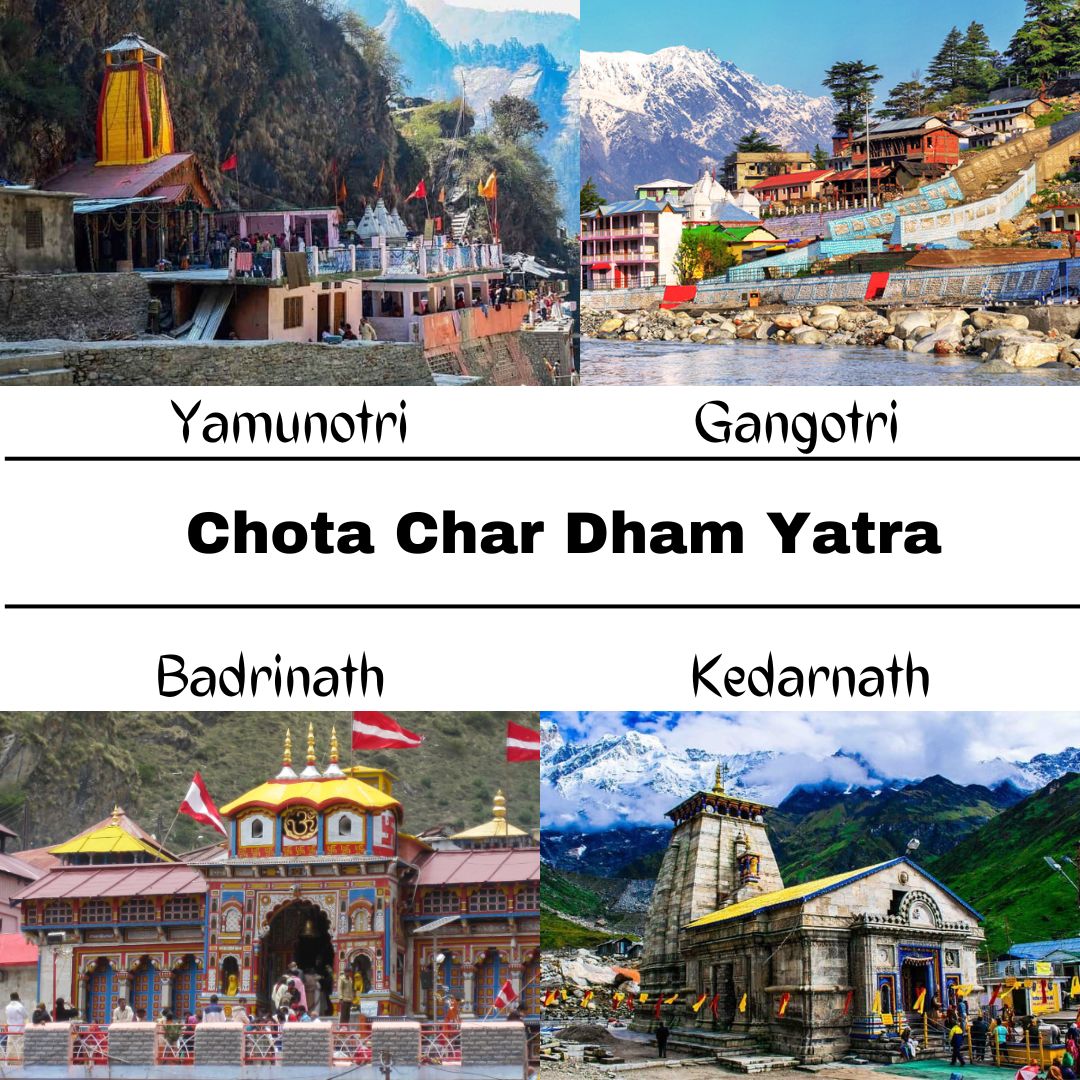
Char means four, and Dham means abode. The Char Dham, as defined by the Saint Adi Sankaracharya consists of three shrines of Vishnu and one of Lord Shiva. They are Dwaraka, Badrinath, Puri and Rameshwaram. The significance of these temples is that they belong to different Yugas. Badrinath belongs to the Satyuga, Rameshwaram to the Tretayuga, Dwaraka to Dwaparayuga and Puri to the Kali yuga.
Another small but significant Hindu pilgrimage circuit in the Himalayan religion is the Chota Char Dham circuit which consists of travelling to the four holy sites, namely Yamunotri, Gangotri, Kedarnath and Badrinath. These locations are highly sacred. Kedarnath is home to Lord Shiva, while Badrinath is to Lord Vishnu. Yamunotri is home to Goddess Shakthi and Gangotri to Maa Ganga. Traditionally this Yatra is undertaken from West to East and starts at Yamunotri, followed by Gangotri, Kedarnath and finally ending at Badrinath.
2. Jyotirlingas
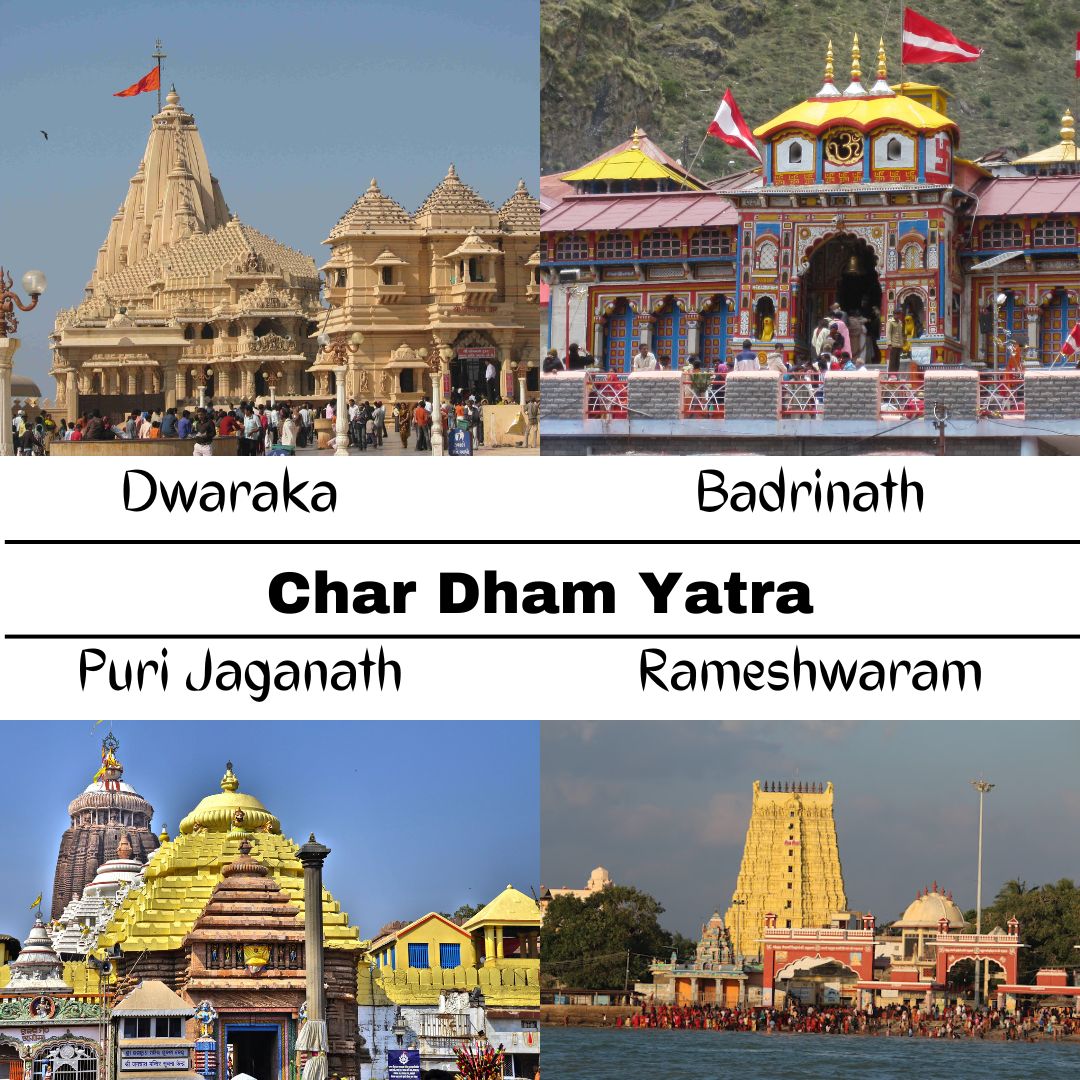
Jyothi means light, and Jyothirlingas represent the holy shrines of Lord Shiva. The Jyotirlingas are temples where Lord shiva appeared as a column of light. Although there are 64 such Jyotirlingas, 12 are considered the most powerful. They are at; Somnath - Gujarat, Srisaila - Andra Pradesh, Mahakaleshwar - Ujjain, Omkareshwar - Madhya Pradesh, Kedarnath - Uttarakhand, Daakini - Pune, Kasi Vishwanath - Varanasi, Triambakeswar - Nashik, Naeshwar - Dwaraka, Vaidyanath - Deoghar, Rameshwaram - Tamil Nadu and Girshneshwar at Aurangabad.
3. Shakthi Peetas
Shakthi Peetas are shrines dedicated to Goddess Shakthi. According to various Hindu legends, Lord Vishnu’s Sudarshana Chakra cut the body of goddess Shakti. The body parts fell upon the Earth, becoming powerful sacred sites on which temples got consecrated. It is a common belief that there are 64 Shakthi Peetas. Some of which are even located in as far as Pakistan, Nepal and Sri Lanka.
4. Divya Desam
The Divya Desams are the Vishnu and Lakshmi temples mentioned by the Alvars following the Vaishnavite tradition. There are 108 Divya Desams according to the Vaishnava tradition. Out of which 105 temples are located throughout India, 1 in Nepal, and the last two temples are located outside the Earth. The state of Tamil Nadu had got a substantial number of these temples, as there are 84 Divya Desams present here.
5. Pancha Bhoota Sthalam
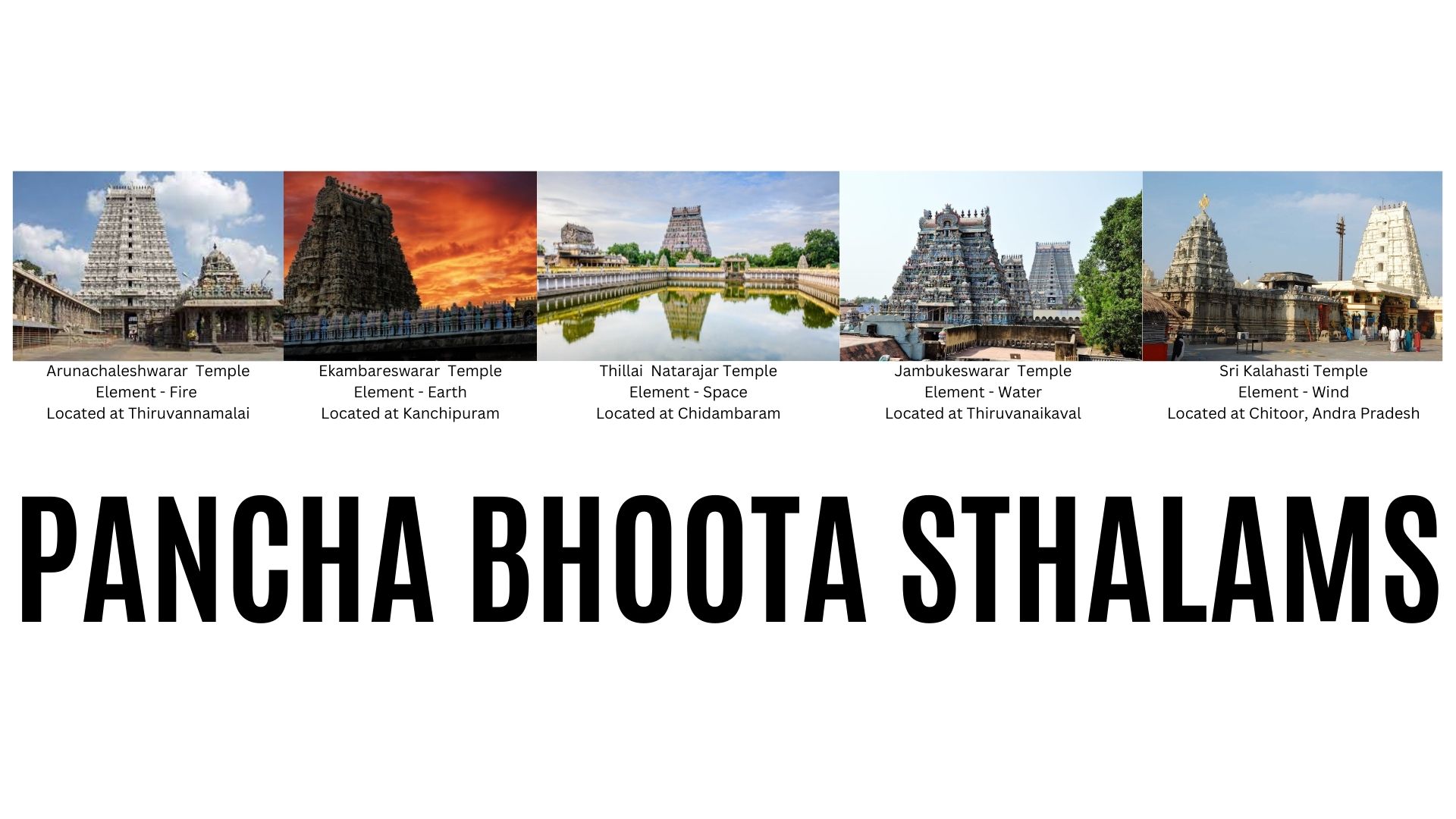
These refer to the temples that are dedicated to the five elements of nature viz., Earth, water, fire, wind and space. All these five temples are located in southern India. Four of which are in Tamil Nadu and one in Andra Pradesh. The temples are ;
Ekambareshwarar temple - Earth - Located at Kanchipuram, Tamil Nadu
Jambukeshwarar temple - Water - Located at Thiruvanaikaval, Trichy
Arunachaleshwarar temple - Fire - Located at Thiruvannamalai
Thillai Natarajar temple - Space - Located at Chidambaram
Sri Kalahasti - Wind - Located at Andra Pradesh
These five temples are dedicated to Lord Shiva.
6. Holy cities of Sapta Puri
Sapta in Sanskrit means seven and refers to the seven holiest cities according to the Hindu Dharma. It is believed that one visiting these seven places attain moksha or liberation from the circle of birth and death. The holy cities are : Ayodhya, Mathura, Kashi, Kanchipuram, Dwaraka, Haridwar and Avantika.
7. Holy Melas
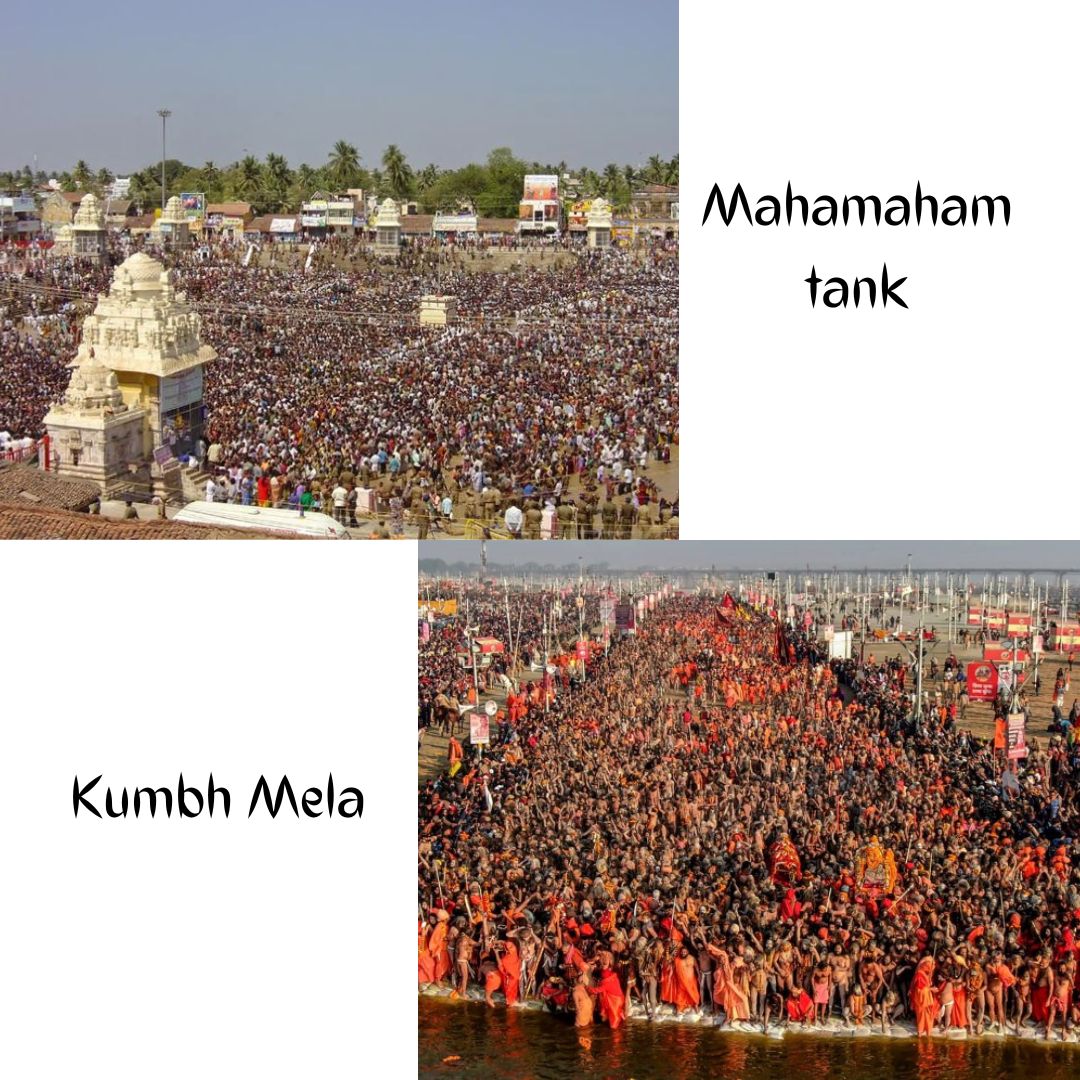 Melas are festivals that are celebrated in sacred places. One of the holiest is the Kumbha Mela which is held across four locations (Allahabad, Ujjain, Haridwar and Nashik) once in twelve years. This festival is not complete without the devotees taking a dip in the rivers that flow in the respected places. Another famous gathering is at the holy city of Kumbakonam, where Mahamaham is organised. This festival is celebrated once in twelve years at the Mahamagam tank. The festival extends for almost ten days and is termed 'The Kumbha Mela of the south’. People throng to these places in millions for the salvation of their sins and to attain moksha.
Melas are festivals that are celebrated in sacred places. One of the holiest is the Kumbha Mela which is held across four locations (Allahabad, Ujjain, Haridwar and Nashik) once in twelve years. This festival is not complete without the devotees taking a dip in the rivers that flow in the respected places. Another famous gathering is at the holy city of Kumbakonam, where Mahamaham is organised. This festival is celebrated once in twelve years at the Mahamagam tank. The festival extends for almost ten days and is termed 'The Kumbha Mela of the south’. People throng to these places in millions for the salvation of their sins and to attain moksha.
8. Shrines of Saints
Another holy place, according to Hinduism, is the Samadhis. A Samadhi is a holy place where powerful saints of India have attained their state of ‘ Mahasamadhi’ - where the soul of the saint consciously leaves the body with full awareness. Mantralayam is the Samadhi of the great Saint Sri Ragavendra, The Belur Math has the holy remains of Sri Ramakrishna Paramahamsa, and Puri has the holy remains of Swami Sri Yukteshwar Giri.
Apart from these places, countless people also undertake their journey to temples such as Tirupati Sri Venkateswara temple ( the most visited one in India), the Golden Temple of Amritsar, Madurai Meenakshi Amman Temple, Vaishno Devi Temple, to name a few.
Thus, for a pilgrim, any holy place that he is attracted to spiritually, becomes a destination. In the modern days, the process of pilgrimage has become simple with modern facilities, and one can travel comfortably to their places of worship hassle-free. Special trains and other forms of commuting are organised and people travel to these places of worship with ease.
 I am Vaishnavi Gurusankar, a passionate educator, a wife and a mother. I have over a decade of experience as an educator and have been closely working with teachers and children of all ages. I am also an active parenting blogger and founder of Magical Unicorn, an exclusive parenting blog founded on Indian ethos, values and stories at its core.
I am Vaishnavi Gurusankar, a passionate educator, a wife and a mother. I have over a decade of experience as an educator and have been closely working with teachers and children of all ages. I am also an active parenting blogger and founder of Magical Unicorn, an exclusive parenting blog founded on Indian ethos, values and stories at its core.
NEXT ARTICLE
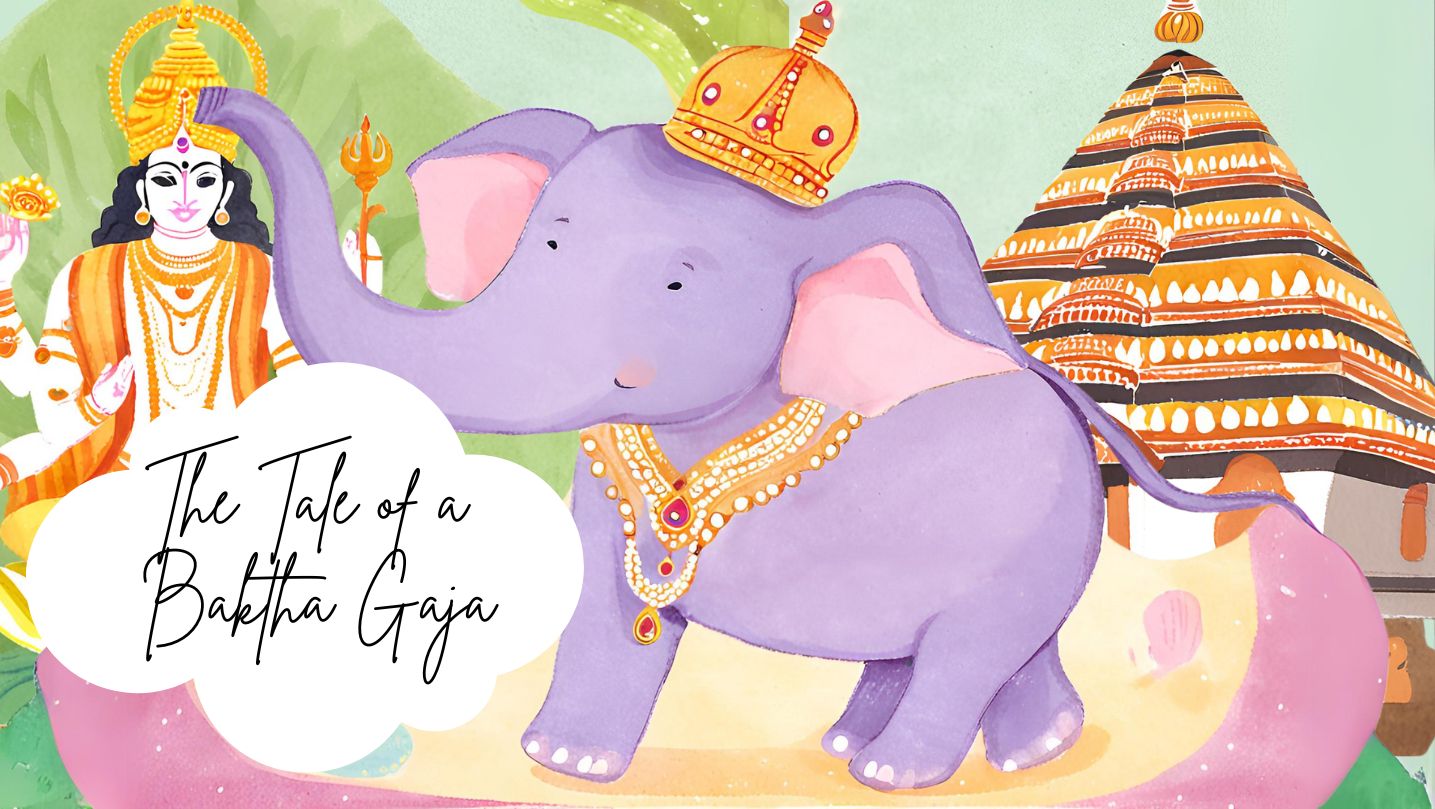
In the lush, green heart of Kerala lived an elephant who became a living legend - a tale of an elephant turned into a bakth. His name was Keshavan, bu...
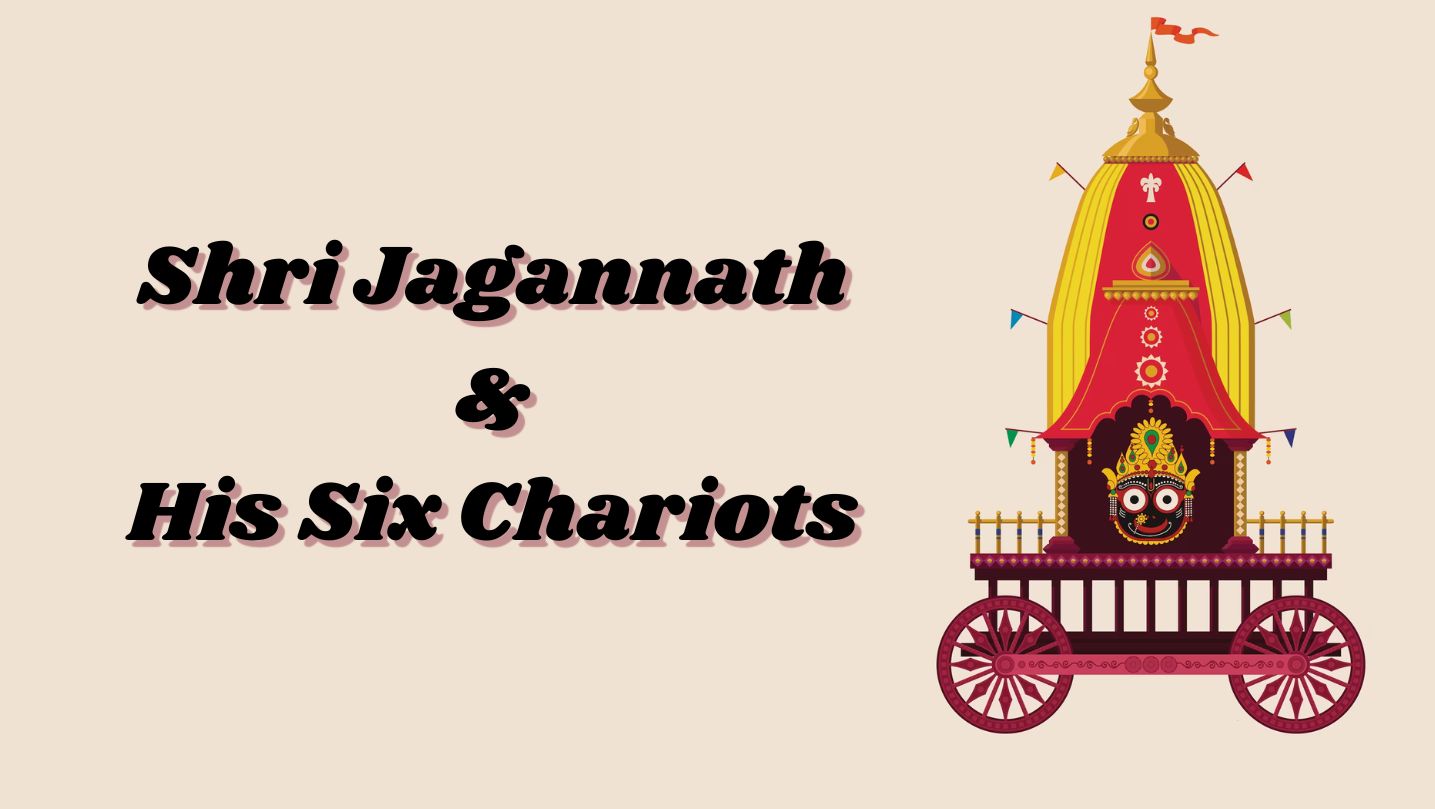
The Chaitanya Charitamrita by Shri Krishna Das Kaviraj provides a vivid description of the operations management of Shri Gundicha Yatra during the tim...
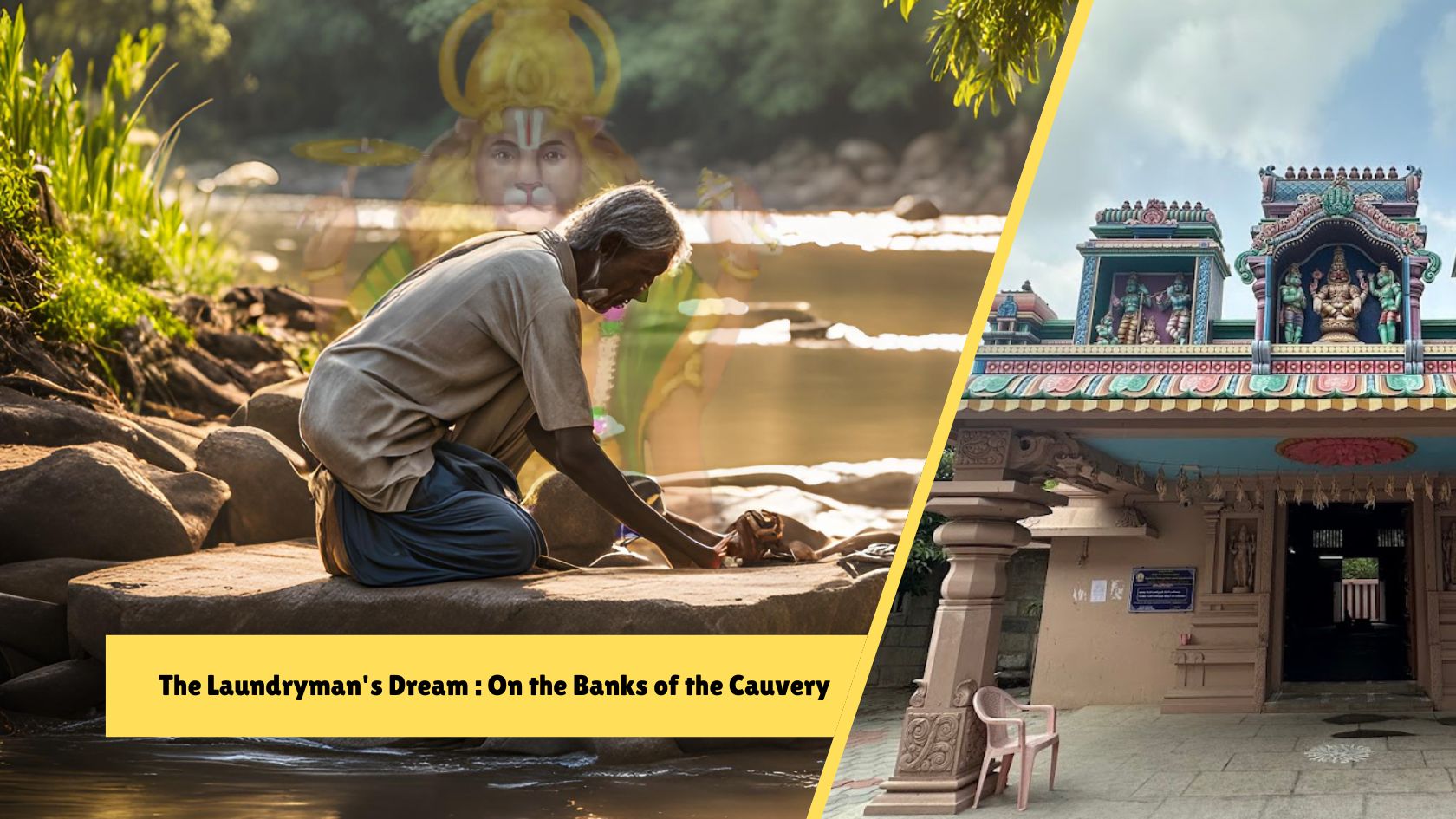
The sun beat down on my back as we stepped out of the car, the air thick with the humidity of rural Tamil Nadu. Chinthalavadi, a small village nestled...